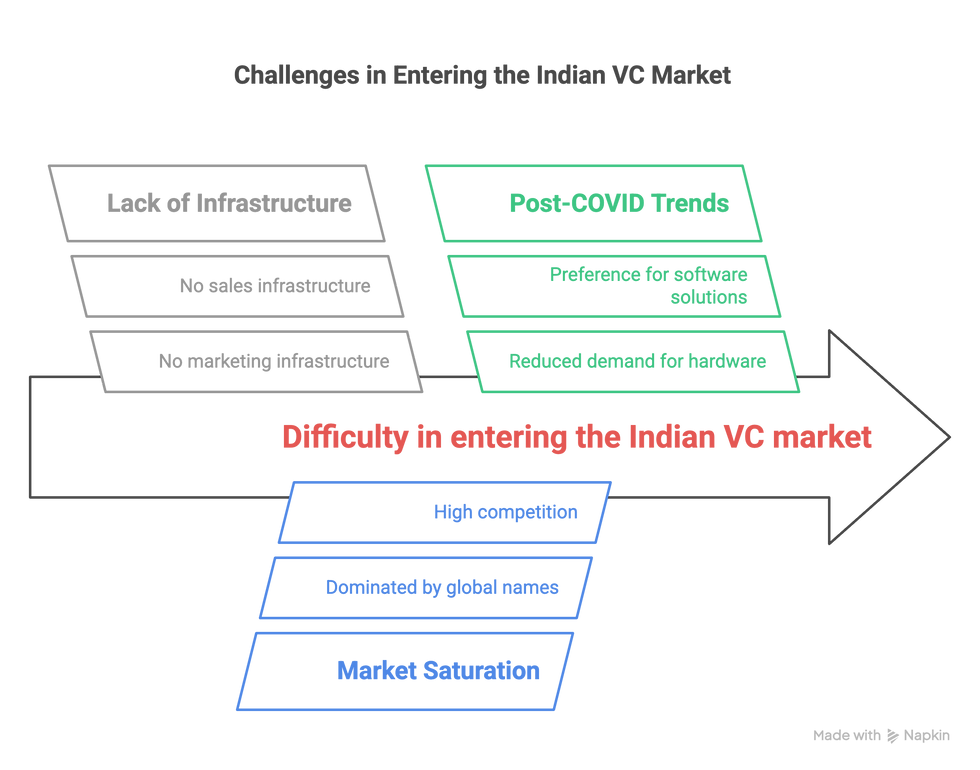Breaking Through the Noise: How India’s Only VC Hardware Startup Is Carving a Market of Its Own
- tanoy majumdar
- Apr 24
- 3 min read
The bold journey of an Indian startup leveraging local manufacturing to challenge global giants in video conferencing.
In the crowded digital communication space, where software-based video conferencing dominates post-COVID, a bold Indian startup set out to challenge the tide. With cutting-edge tech licensed from the U.S. and a vision to manufacture high-quality VC hardware right here in India, this company wasn’t just trying to sell products—it was on a mission to redefine an entire category.
The Background: Local Tech, Global Standard
The startup—India’s only manufacturer of VC hardware—combined global design with local manufacturing under the “Make in India” banner. With a complete solution stack of software and hardware, they believed Indian enterprises deserved more than imported black boxes—they deserved innovation, support, and sovereignty.
But belief alone doesn’t build market share.

The Roadblocks: Crowded Market, No Sales Team, Changing Customer Behaviour
Despite their unique positioning, the company faced immediate roadblocks:
No marketing or sales infrastructure in place.
The Indian VC market was heavily saturated, dominated by global names like Zoom, Cisco, and Microsoft Teams.
Post-COVID, enterprises leaned toward software-only solutions—making it even harder to justify VC hardware.
Still, the goal remained ambitious: Rs. 50 million in revenue within the first 12 months, and a long-term marketing machine to follow.
The Strategy: From Zero to Market in 12 Months
To overcome these hurdles, the company turned to Babsha to drive its India-entry strategy. Here’s how we helped:
🔍 1. Discover the Gaps and Build a Strong Identity
We first analyzed the Indian market to identify product-market fit. Our findings helped the startup position itself around key USPs:
“Make in India” advantage
Data privacy & local servicing
Seamless integration with popular platforms
This led to the creation of core marketing tools: a conversion-optimized website, brand brochure, pitch decks, an ad film, and press coverage in tech magazines.
🏛️ 2. Tap Into Government Opportunities
We got the company registered on GeM (Government eMarketplace) and hired a dedicated agency to track tenders. Babsha consultants also arranged personal meetings with procurement heads across government bodies, PSUs, and state institutions.
🎤 3. Events, Exhibitions & Outreach
To establish brand recall, the startup participated in high-traffic trade shows and tech expos—creating face-to-face engagement opportunities. These events also helped build a network of system integrators, AV partners, and enterprise clients.
The Outcome: From Zero Leads to Rs. 450 Million Sales Pipeline
The results speak volumes. In just 12 months:
✅ 200+ customer meetings were conducted.
✅ A sales funnel worth Rs. 450 million in qualified prospects was built.
✅ The startup closed Rs. 40+ million in deals by year-end.
✅ More importantly, it laid the foundation for sustainable growth, with a robust pipeline and strong government visibility.
The Lesson for Hardware Startups Eyeing India
📌 You don’t need to be a multinational to make it big.
📌 Positioning + outreach + persistence = traction.
📌 Government procurement and local manufacturing are your edge.
I
ndia’s market is evolving, and customers are more open than ever to local alternatives—provided the value is clear and trust is built.
At Babsha, we specialize in helping tech-first companies crack the Indian code—whether you're an OEM from Europe or a startup from India.
Ready to bring your tech to India? Let’s make it happen.🚀 Start your India journey with Babsha →



Comments